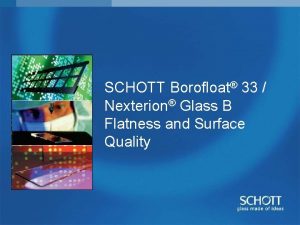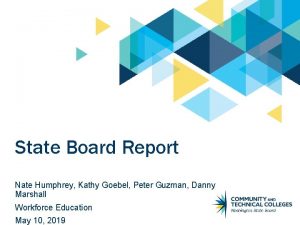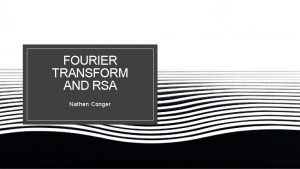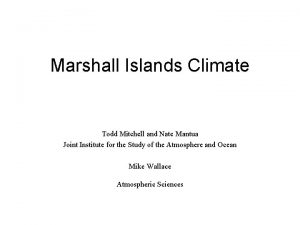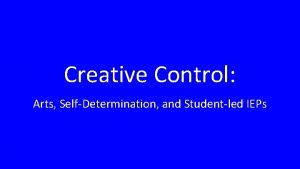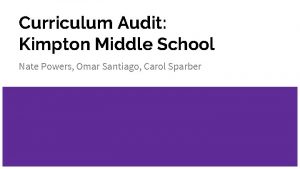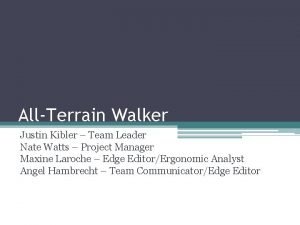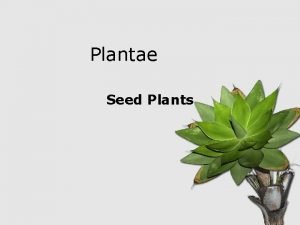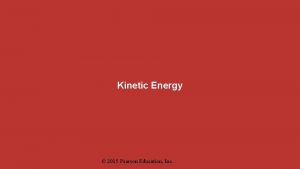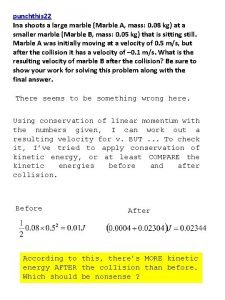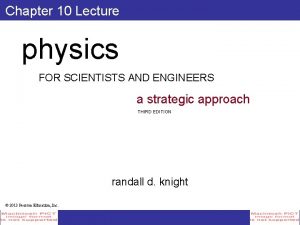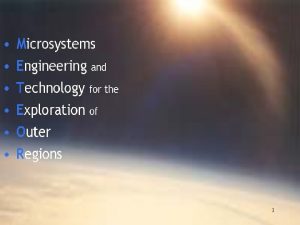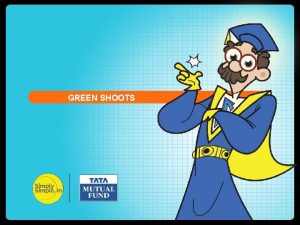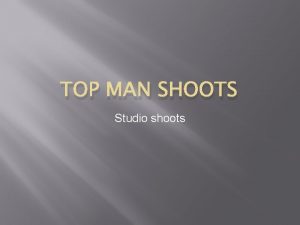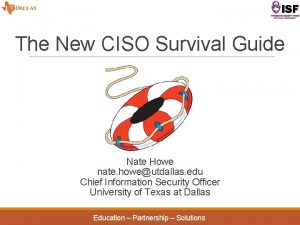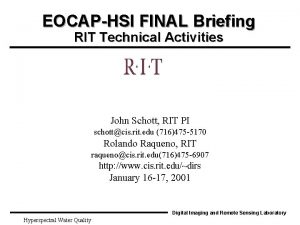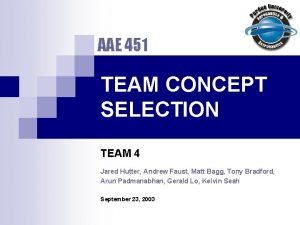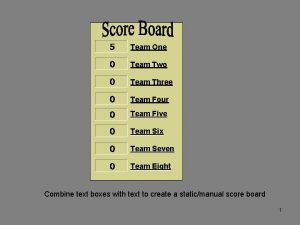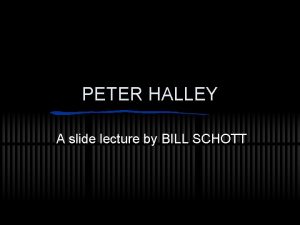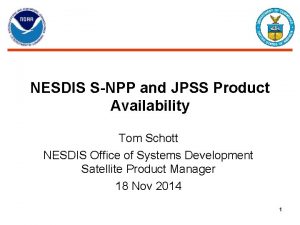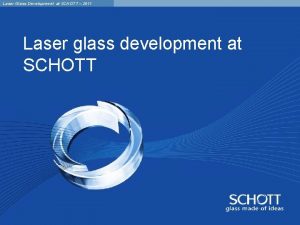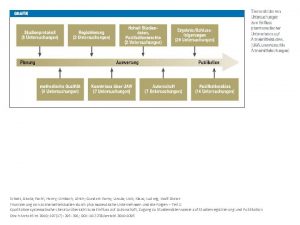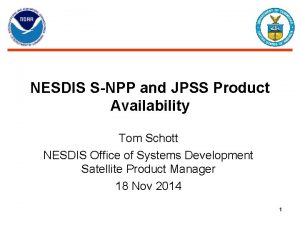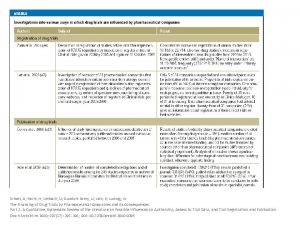1 2004 Team Jared Schott John Shoots Nate
























- Slides: 24

1

2004 Team Jared Schott John Shoots Nate Stockey Caitlin Vanderbush Mike Wilson Stephanie Sprague Josh Shreve 2

METEOR BACKGROUND • To our knowledge, METEOR is the first, university-based, project in the world whose ultimate goal is to launch and place small payloads: – (1) In low Earth Orbit, – (2) on near Earth asteroids, and – (3) lunar surfaces will serve as launching point for future projects, experiments, and research • Benefits of Launching from upper atmosphere – <1% atmospheric density of sea level • Less parasitic drag. Rockets can be launched without payload caps – Eliminates the need for permanent ground launch facilities – Enables launches from different latitudes 3

Project Objective: Design a recoverable, airborne, high altitude, balloon tethered, 3 -axes stabilized platform for future small rocket launches and near space scientific experiments Challenges: To design a system for the rigors of near space (>80, 000’), • <1% atmospheric density • High temperature range • Fast and high temperature changes • Radiation • Limited weight 4

Balloon System Architecture Zero Pressure Balloon Cut-Down Device Parachute Platform 5

Design – Accommodate 2 lb Rocket – Stepper Motor Orientation Device – 6 lb platform/payload weight limit – Simulated payload • High Definition Digital Camera 6

System Block Diagram Digital Compass 7

Flight Computer/FPGA • Altera Apex 20 K Development Board – Nios Processor @ 33. 33 MHz • 32 bit Processor Core • Virtually Unlimited Serial Ports • Architecture is Defined via GUI/Block Diagram – 5 V Digital I/Os through custom daughter-card – 1 Mbyte FLASH Memory • 512 Kbytes Data Memory • Allows Storage of Two Processor Layouts 8

Communications • Kenwood TH-D 7 A(G) – Built in TNC – APRS Capable • Global Positioning System (GPS) – Navman Jupiter 8 – NMEA Compatible • Non-System beacon – 147. 80 MHz • 7 messages in Morse Code 9

ATV and High Resolution Camera • Amateur Television (ATV) – Downlink Only: 439. 25 MHz (Cable Channel 60) • Low Resolution Board Camera – Monitor payload • Video TX • Video OSD • High Resolution Camera • 5 Mega Pixel Camera Donated by • Payload (first mission) 10

Cut-down Device • Why do we need a cut-down device? – Detach balloon from system after mission phase is complete – Satisfy FAA requirements • Ni. Chrome wire – Melts through fishing line when sufficient current passed through • 2 Methods of current activation for redundancy – Wireless System • KEYFOB TX on platform, RX on cut-down device • Passes current through Ni. Chrome upon command – PIC Controller (Microchip 12 F 675) • Redundancy in case of system failure • Cuts down after pre-programmed time 11

Power • Batteries – Three Battery Packs • Ultra. Life 9 Volt Lithium Batteries • Regulated to 5 Volts – 2 batteries in parallel » Stepper Motor • 9 Volts – 6 batteries in parallel » Nios and connected circuitry • Regulated to 12 Volts – 3 sets of 2 batteries in series in parallel » ATV (Video TX, OSD, Low-Res Camera) – Donated by 12

Sensors • Magnetic Compass – Heading information • Pressure • Temperature (Internal, External) • Accelerometer – X, Y, Z acceleration – Donated by 13

Tracking/Recovery • Ground Station – Mobile Equipment Used • Van, Laptops, 2 m XCVR, GPS, Antennas (Mobile, Yagi), Maps (Aeronautical, Road), TV/VCR, Cell Phones – Positions • Range Officer, Flight Director, Communications, Sensors, Dynamics, Payload, Cap. Com, Recovery Teams 14

Dynamic Simulation • Atmospheric Soundings for current wind conditions • Updatable APRS data from the platform • Flight Predictions • Buoyant forces • Velocity based drag • Elevation based gas property lookups 15

• Descent path, landing position and mapping • Location recalculated to Longitude and Latitude • Necessary to assess optimal cut-down time and landing location • Post-Mission analysis for improvement of model 16

Survivability Enclosure 17

Conclusions • Senior Design Requirements – Provided a prototype of launch platform – Includes necessary hardware to conduct successful launch • Improvements/Suggestions – – Carbon Fiber Structure Batteries that can provide more current Lower power consumption Integrated orientation control system 18

Questions? 19

BACKUP 20

Motivation for New Design • Motivation – Smaller Rocket – Federal Aviation Administration Regulations • Ease of launching – Senior Design Schedule 21

GROUND AX. 25 Packet Encoder LAPTOP RS-232 Interface AX. 25 Packet Decoder PLATFORM 2 m Mobile 144 MHz Transceiver Handheld 144 MHz Transceiver 70 cm Packet Modem AX. 25 Packet Encoder RS-232 AX. 25 Packet Decoder Interface Nios Packet Modem LNA VCR TV Display Amateur TV Receiver Amateur TV Transmitter Video OSD LR Cam RS-232 Emergency DF Setup 2 m Beacon 22

• Ascent and Recovery Stage – Balloon • Zero-Pressure Balloon – Allows for pressure to equilibrate • Initial Volume of 357. 9 ft 2 • Final Volume of 19, 000 ft 2 – Parachute • 5 ft diameter nylon • Terminal Velocity of 22 ft/s 23

Rules & Regulations • Title 14 of the Code of Federal Regulations • Part 101: Moored Balloons, Kites, Unmanned Rockets and Unmanned Free Balloons • Title 47 of the Code of Federal Regulations • Part 97: Amateur Radio Service 24
 Schott borofloat
Schott borofloat Schott solar alzenau
Schott solar alzenau Kathy goebel
Kathy goebel Desmos fft
Desmos fft One true living god
One true living god Nate booth
Nate booth Nate rifkin
Nate rifkin Todd nathaniel marshall
Todd nathaniel marshall Nate plasch
Nate plasch Naté dearden
Naté dearden Nate parsley
Nate parsley Nate bard
Nate bard Queer
Queer Nate powers
Nate powers Nate ramirez
Nate ramirez Nate watts
Nate watts A small child slides down the four frictionless slides
A small child slides down the four frictionless slides Angiosperm life cycle
Angiosperm life cycle Eats roots shoots and leaves joke
Eats roots shoots and leaves joke Kinetic energy formula
Kinetic energy formula Ina shoots a large marble
Ina shoots a large marble A spring loaded gun shoots a plastic ball
A spring loaded gun shoots a plastic ball Jared hoberock
Jared hoberock Dr. jared van snellenburg
Dr. jared van snellenburg Jared cates
Jared cates
